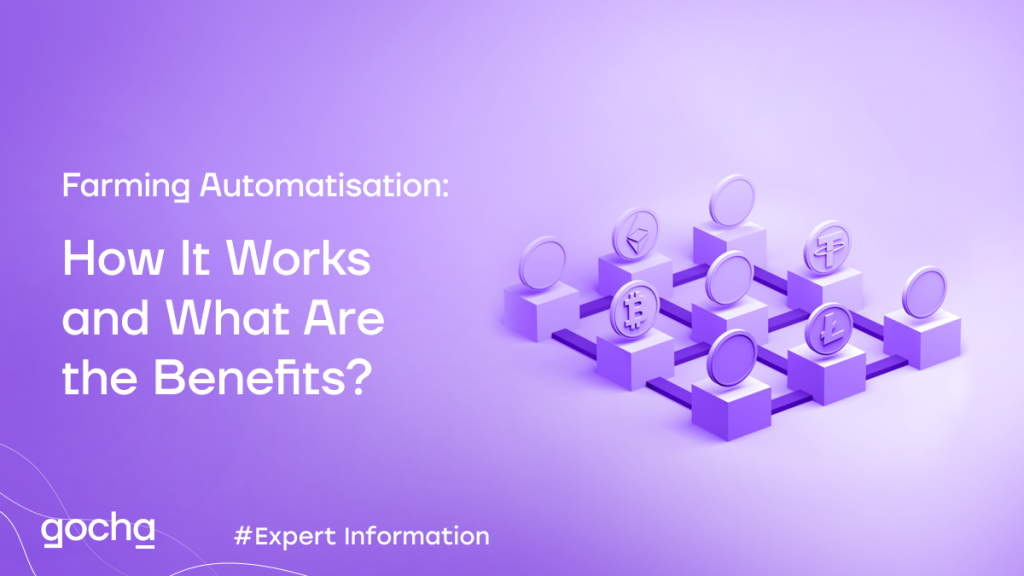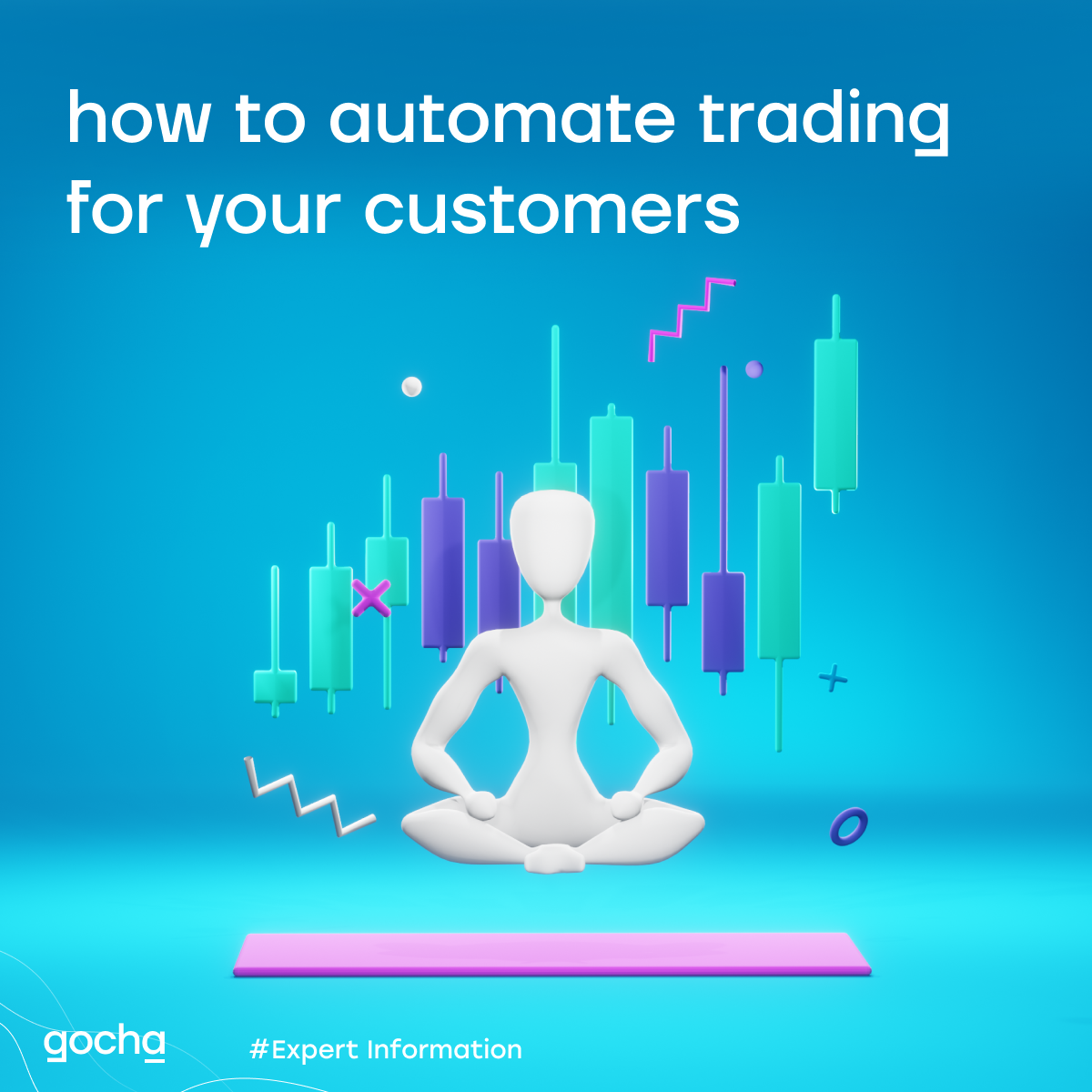Farming Automatization: How It Works and What Are the Benefits?

Farming became the most discussed topic in the DeFi summer of 2020. It has since remained one of the most sought-out crypto investment strategies by many who look to earn rewards on their crypto holdings.
Its emergence saw the total value locked (TVL) across all DeFi platforms reach an all-time high of $256 billion, recorded on December 2, 2021. Despite the current market condition and risks, which have likely resulted in TVL dropping to around $112.33 billion, farming automation is still one of the most profitable strategies crypto investors can execute today.
What is Farming Automatization?
Farming automatization provided by GOCHA is a crypto investment tool that allows you to generate crypto rewards in return for your crypto holdings. This return is generated through what is known as a ‘staking’ process, whereby the crypto holder locks up their tokens in order to earn rewards. These rewards usually come in the form of interest payments or newly minted tokens.
Farming automatization doesn’t refer to a specific process but rather the overall idea of seeking out returns through some combination of staking, lending, and borrowing. The concept is similar to traditional banking systems, which give interest on the amount you agree to lend out. For farming automation, ROIs are being rewarded with additional cryptocurrency.
The most notable cryptocurrencies that support farming automation include stablecoins such as USDC, USDT, DAI, and BUSD. Other popular cryptocurrencies include Bitcoin (BTC), Ethereum 2.0 (ETH), Chainlink (LINK), Polkadot (DOT), Tezos (XTZ), Polygon (MATIC), and SwissBorg (CHSB), among others.
How Does Farming Automatization work?
Farming automatization works with a liquidity provider and a liquidity pool. An investor that puts money into a smart contract is known as a liquidity provider. The liquidity pool is a smart contract that contains money. The automated market maker (AMM) model is the foundation of farming automation.
Liquidity providers (LPs), who deposit cash into liquidity pools, are a big part of the AMM concept. Most DeFi markets rely on these pools to let users borrow, lend, and trade tokens. DeFi customers pay the marketplace trading costs, which then are distributed to LPs based on their portion of the pool’s liquidity.
However, because this is a new technology, the implementations might be drastically diverse. There’s little question that new techniques will emerge that will improve on the current implementations.
Apart from fees, the distribution of a new token is another reward to incentivize LPs to add funds to a liquidity pool. For example, a token may only be available for purchase in small amounts on the open market. It may be accumulated, on the other hand, by supplying liquidity to a certain pool.
The way tokens are distributed will depend on the implementation of the protocol. The important thing is that liquidity providers are compensated based on the amount of liquidity they provide to the pool.
The deposited money is usually stablecoins pegged to USD. However, this is not a necessity. DAI, USDT, USDC, BUSD, and other stablecoins are among the most often utilized in DeFi. With some protocols, they will mint tokens to represent the coins you’ve put in the system. For instance, you’ll get cDAI (Compound DAI) if you put DAI into Compound. Or, if you put ETH to Compound, you’ll get cETH in return.
Farming automation allows investors to earn yield by putting coins or tokens in a decentralized application, or dApp. Examples of dApps include crypto wallets, DEXs, decentralized social media, and more. The yield consists of the percentage return on investment and is usually paid frequently, like daily or weekly. Investors can begin earning returns almost immediately, with no need to wait for a new coin or token to be listed on an exchange.
Farmers generally use decentralized exchanges (DEXs) to lend, borrow or stake coins to earn interest and speculate on price swings. Farming automation across DeFi is facilitated by smart contracts – pieces of code that automate financial agreements between two or more parties.
The Benefits of Farming Automatization
The main benefit of farming automatization is maximizing the capital efficiency of your crypto assets. Sticking to a single yield source is usually less risky but also means missing out on potential rewards on other networks and protocols.
Fortunately, many DeFi protocols are interoperable, meaning you can earn from using a single crypto asset on more than one platform at a time. This enables you to earn yield from multiple sources using the same crypto.
Every protocol has a different way of distributing rewards, and they’re usually composed of both in-kind rewards and tokens. Tokens may simply be a bonus for things like lending or borrowing or a governance token that incentivizes participation in the protocol.
Most DeFi platforms don’t automatically compound rewards, but other platforms offer enhanced long-term yield by automatically compounding your rewards. You can also manually deposit and allocate the tokens you’re rewarded for accruing yield from other sources.
The best part about farming automation is that your assets remain fully in your custody while they’re earning you rewards. This means you can withdraw and deposit your yield farming cryptos whenever you want since they basically never leave your account.
Is It Worth Using Farming Automatization?
Farming automation in cryptocurrency has allowed many people to get involved in trading and investing. In addition, it is a great opportunity for new traders because of the low barrier to entry. Contact GOCHA to learn more about the latest opportunities and keep yourself up-to-date with farming solutions.













